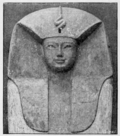Search results
Did you mean: cranial croatia
The page "Cranium, crania" does not exist. You can create a draft and submit it for review or request that a redirect be created, but consider checking the search results below to see whether the topic is already covered.
- Look up cranium or crania in Wiktionary, the free dictionary. The cranium (plural crania) is a part of the skull. Crania or cranium may also refer to:...842 bytes (125 words) - 23:38, 19 May 2022
- endocast is quite unique for a hominin, except for the related Ngandong crania (which share morphology), being rare in the human record. Sm 4 is probably...14 KB (1,668 words) - 11:15, 7 March 2024
- The Salé cranium is a pathological specimen of enigmatic Middle Pleistocene hominin discovered from Salé, Morocco by quarrymen in 1971. Since its discovery...11 KB (1,194 words) - 00:34, 10 March 2024
- The Ndutu skull is the partial cranium of a hominin that has been assigned variously to late Homo erectus, Homo rhodesiensis, and early Homo sapiens,...11 KB (1,292 words) - 03:09, 17 March 2024
- infer the ancestry of an unknown cranium. CranID compares an unknown cranium with 74 geographic samples, from 3,163 crania from 39 different populations...11 KB (1,364 words) - 19:37, 9 March 2024
- KNM ER 3733 is a fossilized hominid cranium of the extinct hominid Homo ergaster, alternatively referred to as African Homo erectus. It was discovered...3 KB (374 words) - 15:59, 11 March 2021
- years ago. The crania recovered from Sima de los Huesos have multiple specimen catalogues including Sima de los Huesos 4, SH 4, Cranium 4, Cr4, and Skull...7 KB (720 words) - 08:19, 3 April 2024
- demonstrate the antiquity of Aboriginal occupation of Australia when a cranium, unearthed in 1940, was found to be nearly 15,000 years old. Subsequent...8 KB (973 words) - 04:37, 20 December 2023
- anterior, closer to the face, and posterior of the cranium. Researchers conclude that both crania demonstrate a marked or almost reduced post-orbital...9 KB (984 words) - 16:31, 21 November 2023
- for modern investigations regarding the morphology and morphogenesis of crania. With Karl Bogislaus Reichert (1811-1883), he was co-architect of the Reichert–Gaupp...3 KB (281 words) - 04:30, 1 September 2023
- 71-96, 1961 Stringer, C. B., & Trinkaus, E., "The shanidar Neanderthal crania.", Aspects of human evolution, Taylor and Francis, London, pp. 129-165,...38 KB (4,663 words) - 14:14, 29 May 2024
- been many debates on the relationships between Middle Pleistocene hominin crania from Eurasia and Africa because they display a mosaic of both primitive...34 KB (4,218 words) - 06:01, 13 April 2023
- at Dmanisi on September 24, 1991. In 1999, partial crania D2280 and D2282 were discovered. Cranium D2282 is likely the accompanying skull to mandible...8 KB (977 words) - 07:12, 5 February 2024
- drilled or scraped into the human skull. The intentional perforation of the cranium exposes the dura mater to treat health problems related to intracranial...37 KB (4,364 words) - 14:18, 14 May 2024
- Giza crania. Keita viewed the Giza skulls to be part of a “Nile Valley variation” and commented that it was neither obligatory that those crania series...16 KB (1,965 words) - 00:34, 24 April 2024
- crest which gives rise to many cell lineages, and a cranium. In addition to distinct crania (sing. cranium), craniates possess many derived characteristics...17 KB (1,576 words) - 17:42, 17 April 2024
- Two fossil crania were discovered along the Aniene River Valley of Northern Rome, Italy in 1929 and 1935. The two human skulls that derive from Homo neanderthalensis...6 KB (743 words) - 05:22, 9 March 2024
- (Oppenoorth 1932): The original name devised by Oppenoorth for the Ngandong crania. H. e. tautavelensis (de Lumley and de Lumley 1971): Referring to the remains...136 KB (15,777 words) - 21:24, 19 May 2024
- individuals having been found. Of note within these collected fossils are the two crania imbedded in breccia rock in different layers of stratigraphy and were dated...21 KB (2,137 words) - 09:47, 26 April 2024
- Natural History Review, Series 2, Volume 1, Number 2 (1861) On the Crania of the Most Ancient Races of Man by Hermann Schaaffhausen, translated by George
- pilfering pile of artificial stupidity, raided the institute and cribbed crania. Gumshoes, your mission is to bring in Robocrook, bring back the brains
- and ungulate remains. Finally the types of bones usually broken are the crania and limb bones. Different behavioral patterns toward the dead among Middle

















